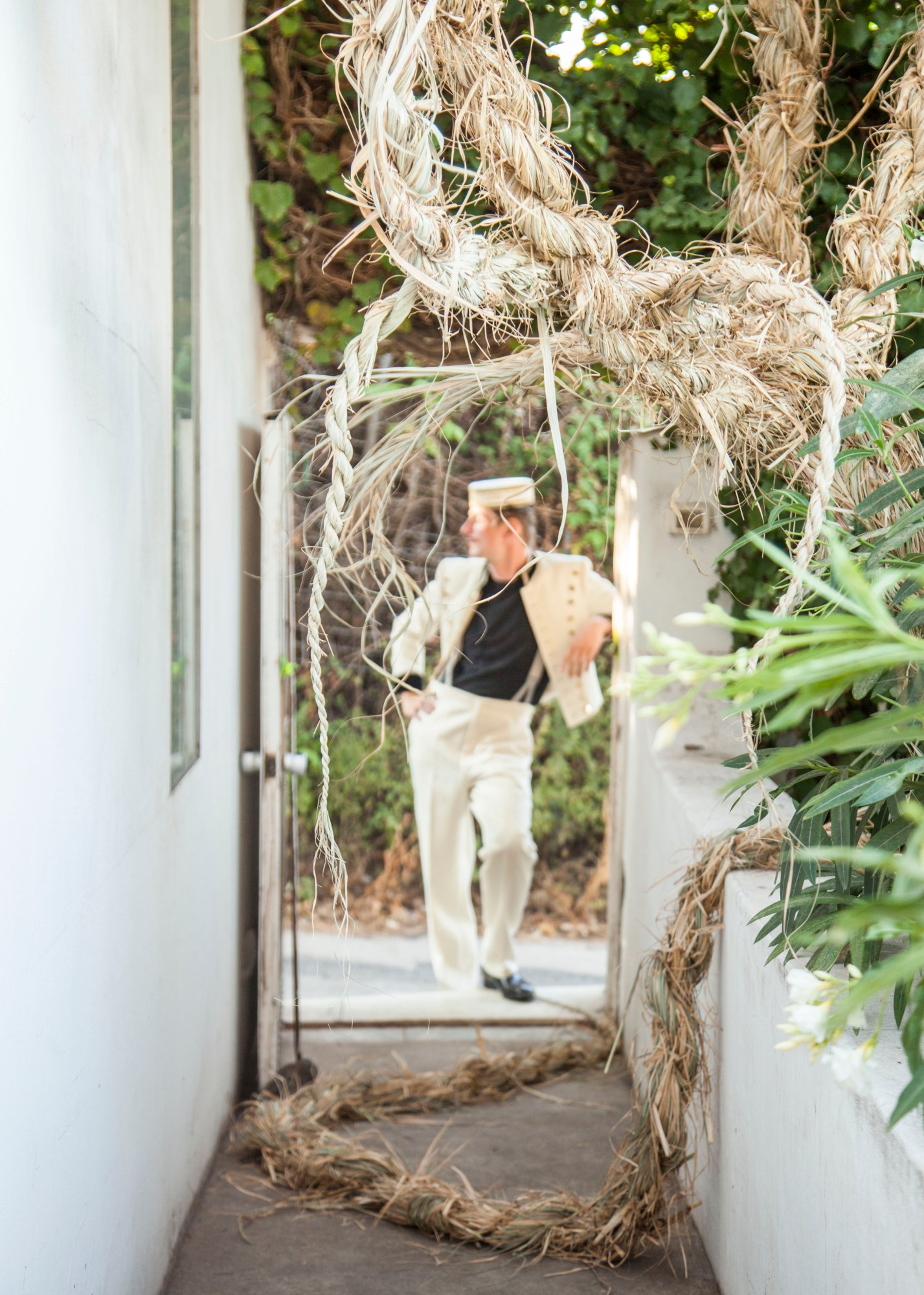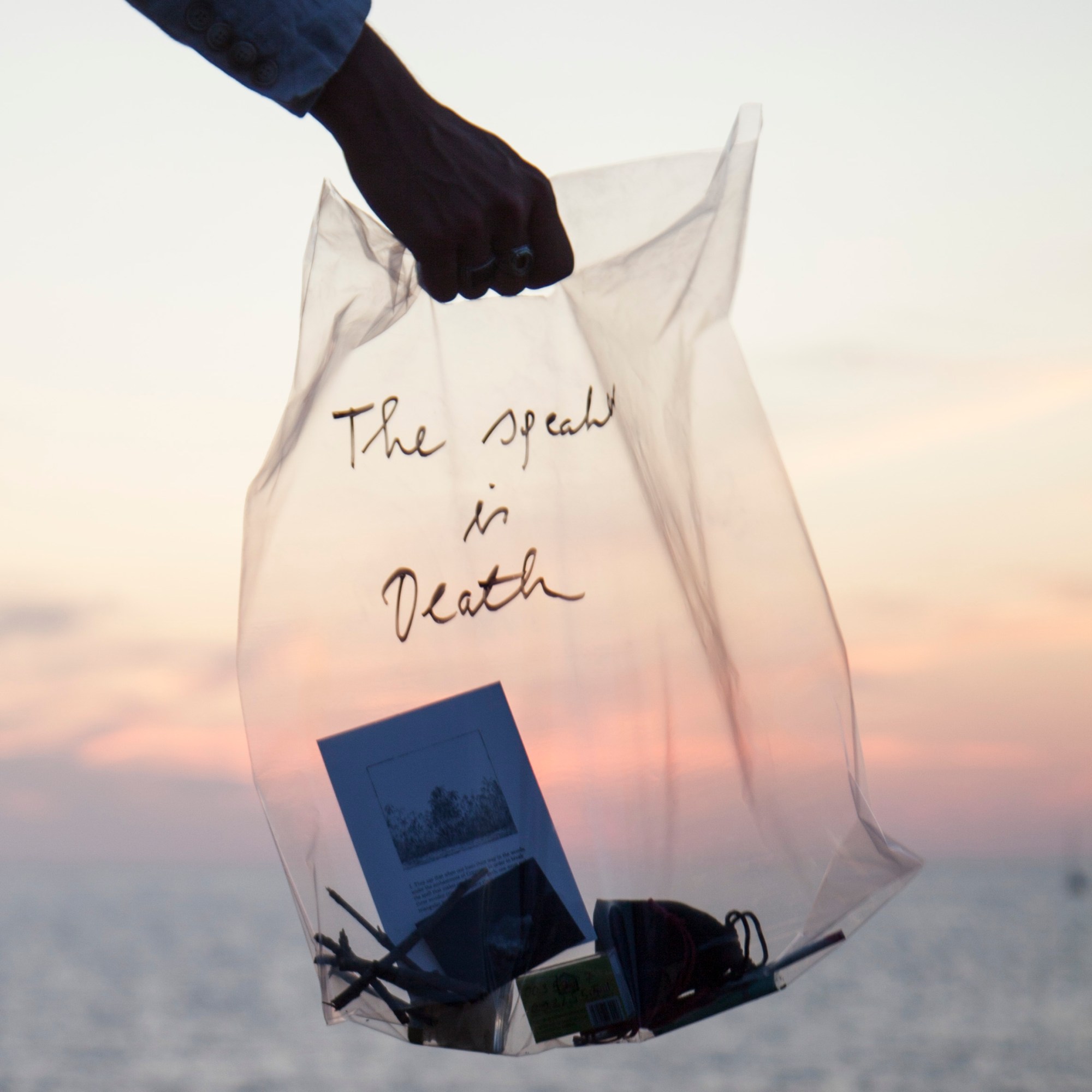For nearly a decade now, the volcanic island of Stromboli, off the coast of Sicily, has been home to the art world’s most eccentric yearly gathering. Somewhere between a happening and an experimental retreat, Volcano Extravaganza defies all categorization in the age of the ever-so-dull global art fair. Every summer in July, the London-based Fiorucci Art Trust, the brainchild of Italian collector and philanthropist extraordinaire Nicoletta Fiorucci, heiress to the prosciutto empire of the same name, invites a handful of international artists to reflect on their practice with a penchant for the immaterial, against the backdrop of lava eruptions and black sand beaches. “A place of possibility,” as artistic director and curator Milovan Farronato says.
And this year was no different. Well, almost. Devised by Polish artist Maria Loboda as “artistic leader” (a role previously held by Eddie Peake, Camille Henrot and Haroon Mirza, among others) the freshly wrapped ninth edition of Volcano Extravaganza took place under the theme of “Death” (uncomfortably topical, as the event started days after a major eruption killed a tourist). “Everyone will experience their death,” Loboda says of the title, loosely based on The Appointment in Samarra, a Mesopotamian tale recounted by English playwright W. Somerset Maugham in 1933. “This edition is to be seen as a play in different acts,” continues the Berlin-based, interdisciplinary artist, whose symbolically-driven work was previously shown at Documenta 13 and, most recently, at the Kunsthalle Basel.
Indeed, theatricality was front and center throughout the festival: from tragedy to comedy, the sacred to the profane, the absurd to the grotesque, and everything in between. In the fashion of 14th-century Italian novellas à la The Decameron, the event’s four days were narrated like tales through a series of cryptic emails sent daily to all attendants and titled after obscure historical references. Guiding us too were subtle cameos by curious characters including a bell boy and a 1950’s cigar-smoking banker, aided by a witchy survival kit containing DIY sunscreen lotion, a diamond stud earring and a mysterious phone number handwritten on a matchbox (supposedly an edible seaweed factory in Ireland, who repeatedly failed to pick up my calls). Worthy of note too: the equally eccentric daily dress codes. My personal favorite: “Divorce Me, Darling!” for which I picked my best (and only, I swear) floral shirt.

But it was a rocky start this year on the island. The oversubscribed opening night, which took inspiration from the lavish 1661 banquet hosted by Superintendent of Finances Nicolas Fouquet in honor of Louis XIV, left many with a bad taste in the mouth. Upon arrival at Fiorucci’s sumptuous villa overlooking the Tyrrhenian sea, some 70 art peeps were greeted by three body-painted, screeching demons (a reference to Pasolini’s adaptation of The Decameron). But only a select few were hand-picked by the hosts and seated at the majestically-long rectangular table. Once populated by the creme-de-la-creme, the table became the central stage of an ambiguous performance: a spectacle of abundance where some ate while others watched.
An uncomfortable scenario which reminded more of Versailles’ tradition of the ‘grand couvert,’ a ritual during which the monarch and his courtiers would eat in public, gracing the commoners with their presence. And it’s true, Fouqet’s original feast was so ridiculously flamboyant it got him arrested. But only Louis XIV took offense, everyone else had a ball. Instead, this enactment felt like an unfortunate mise-en-abyme, self-referencing art world politics in the age of austerity and growing patronage appetite. “Maybe they were trying to starve us?!” joked an artist in attendance, speculating on the hosts’ commitment to the theme of ‘death’. Adding to the confusion, an off-duty performer, freed from their wings, went off mingling covered in dark make-up, soon raising concerns among participating artists about what was perceived as a ‘Blackface’ faux pas.
Yes, experimentation comes with risks and, sometimes, failures. But in response, a mediated, open conversation wouldn’t have harmed. The festival soon reclaimed its avant-garde character. Still hungover from the previous night, the reluctant audience made their way to Casa Monte, a villa formerly owned by artist Marina Abramović, now in the Fiorucci stable. There, among other performances, multidisciplinary French artist Julie Béna made quite an impression with a poignant, theatrical reading embodying the concept of transparency, translated from a work from her recent exhibition at Paris’Jeu de Paume (ps: it was delivered in stunning self-fashioned light-pink silk dress that had us all gagged). Also on the menu this year was the first international screening of Catalan director Albert Serra’s Cannes prize-winning film Liberté, set in a cruising area in decadent 18th-century France. We also regaled in his cleverly executed, multi performance work across the garden of yet-another Strombolian villa, reenacting the last breath of philosophers from various epochs (introduced by a screening of his equally poignant film The Death of Louis XIV).
At night, if not in the company of Bubble Queen —Stromboli’s best-loved prosecco bar on wheels, manned by a lively chemistry school teacher from Naples—the Extravaganza contingent can be found at the local club La Tartana or, if you’re lucky, at the iconic beach parties organized by Stromboli’s official taxi driver-cum-community organizer, Pascuale. It’s there that the magic happens, really: where gallerists come together with the boys from the dinghy-boat rentals and middle-aged white women shaking shamanic rattles for a dance off.
“Because they’re junkies to the volcano!” responded Loboda one evening, after I naively questioned why any of Stromboli’s 500 residents would chose to live flanked by one of Europe’s only active volcanoes. “And soon, you will be one too!” she insisted. I was starting to believe her. The constant ash cloud floating over our heads, punctuated by Mount Stromboli’s purr, is inducing to a particular kind of adrenaline buzz, unsuitable for the faint of heart. And thanks to the Fiorucci Art Trust, the island—already immortalized in the work of Jules Vernes, Roberto Rossellini and Marina Abramović—has become central to many more artists’ lives and careers over the years. Take Polish artist Paulina Olowska who, after her 2012 stint in Stromboli, received a solo performance at Tate Modern, or Goshka Macuga, whose obscure alien intervention at the 2015 edition led to a sophisticated solo exhibition at the Prada Foundation the following year.

But the crown jewel at this year’s iteration of Volcano Extravaganza, was its extension to the archeological ruins of Pompeii, southeast of Naples, which was buried under volcanic ash in the eruption of Mount Vesuvius 2 millennia ago. There, outside the iconic Villa of the Mysteries, known for its preserved Roman frescos, Turner Prize-nominated British artist Anthea Hamilton and contemporary dancer Eve Stainton engaged in a site-specific improvisation with movement, donning camouflage-like silk crepon costumes, designed in collaboration with Jonathan Anderson for the artist’s Tate Britain show Squash. (“More like the beginning of something else,” Hamilton told me when I asked whether the piece was the continuation of the work). And as the sun set, London-based artist Prem Sahib devised his sophisticated choreography Cruising Pompeii. Half a dozen local men walked up and down the villa’s colonnades, performing cryptically-stylised routines with their arms, guided by iPhone lights and the exhaust noise of a motorbike outside of the archeological site. A thoughtful and cleverly-executed site-specific approach to a complex, archeological site.
“I think freedom is something that is missing in the art world,” Nicoletta Fiorucci tells me, when I ask about the unconventional format of Volcano Extravaganza. I agree. In a globalized art world, increasingly governed by commercial fairs and market’s fluctuations, there’s something deeply refreshing —and crucial—about enabling artists to experiment outside of financial and institutional constraints. All the better if it takes place amid the inspirational setting off a remote, volcanic island. That is, if you get a seat at the table.

